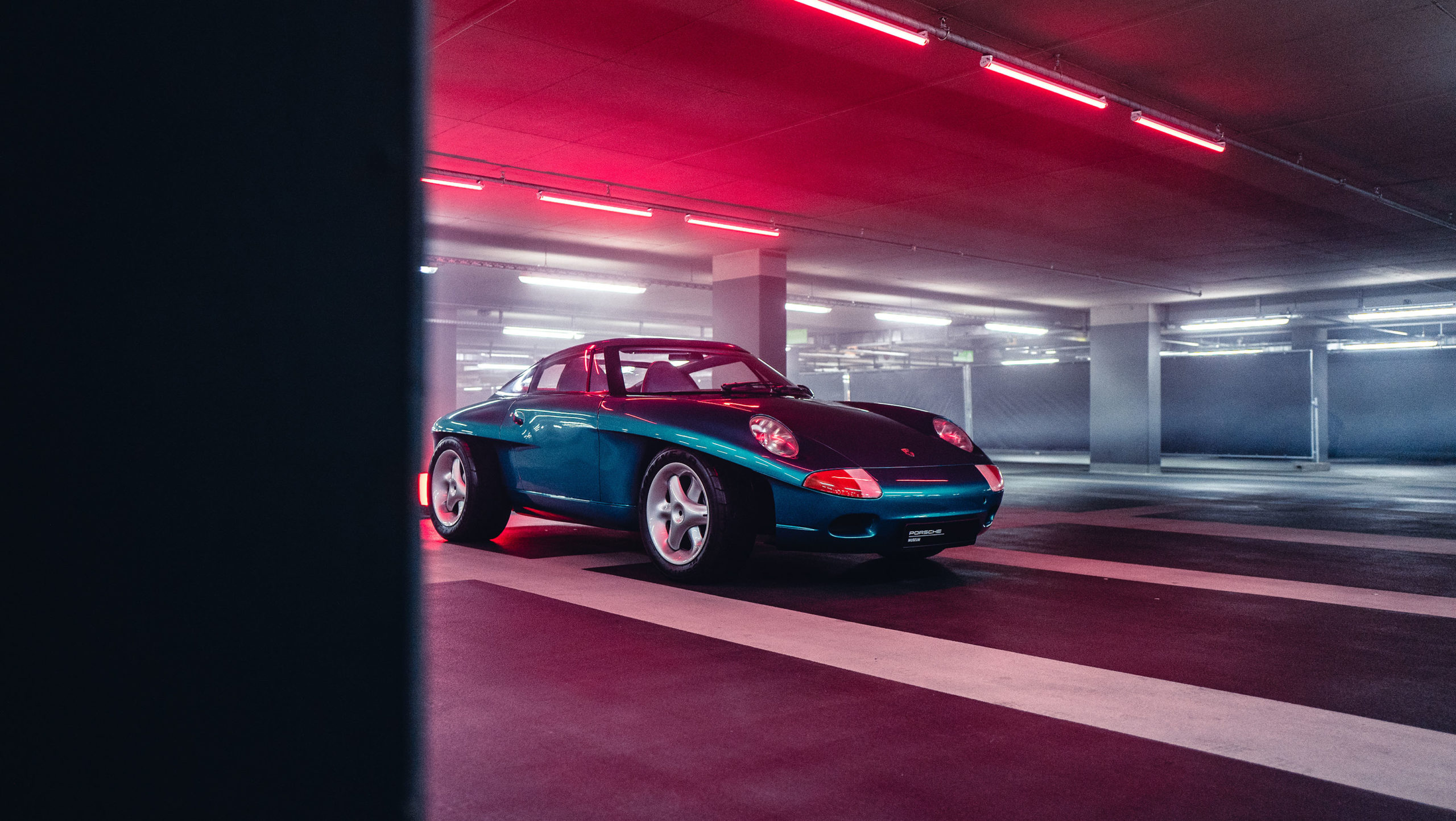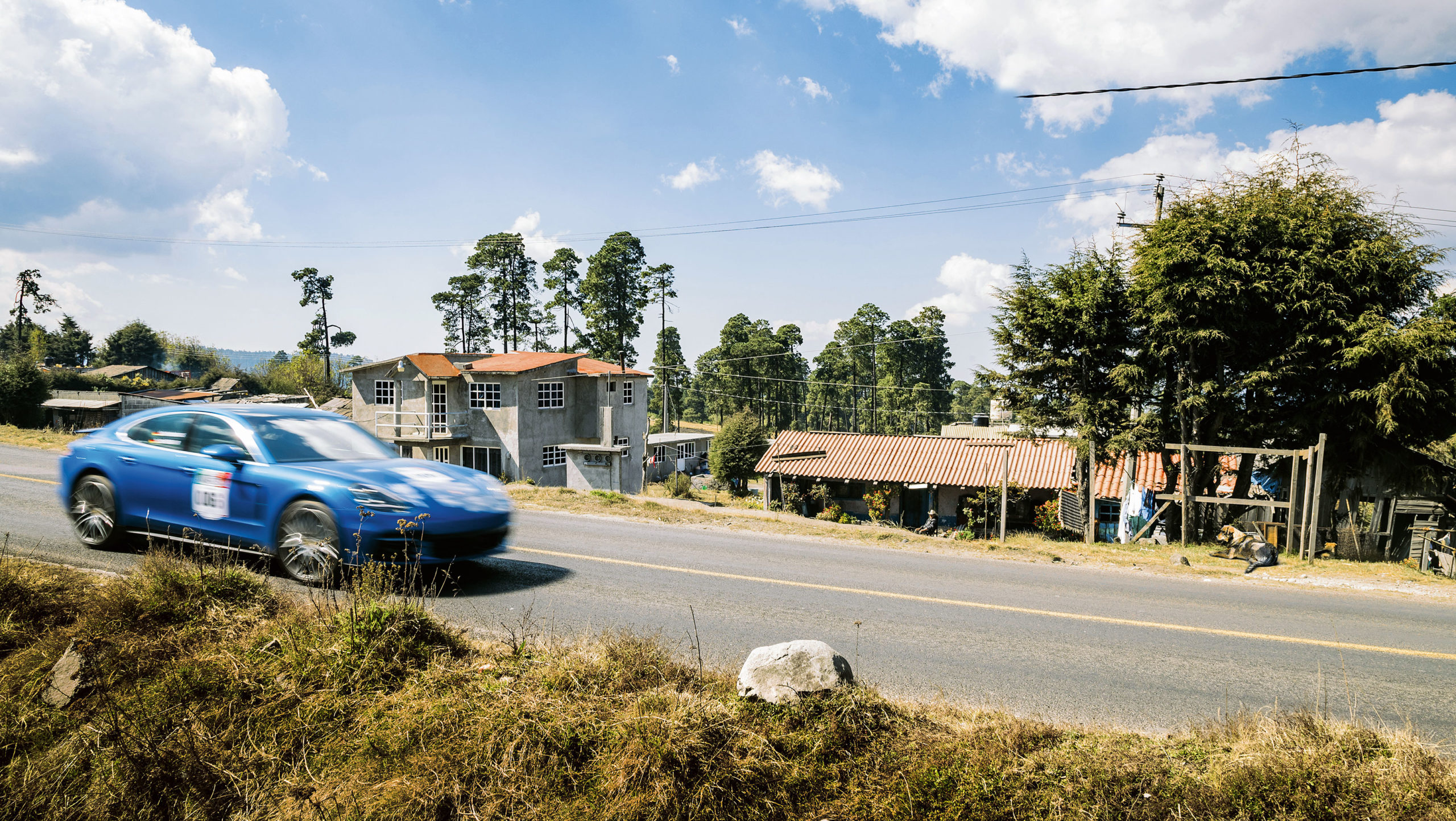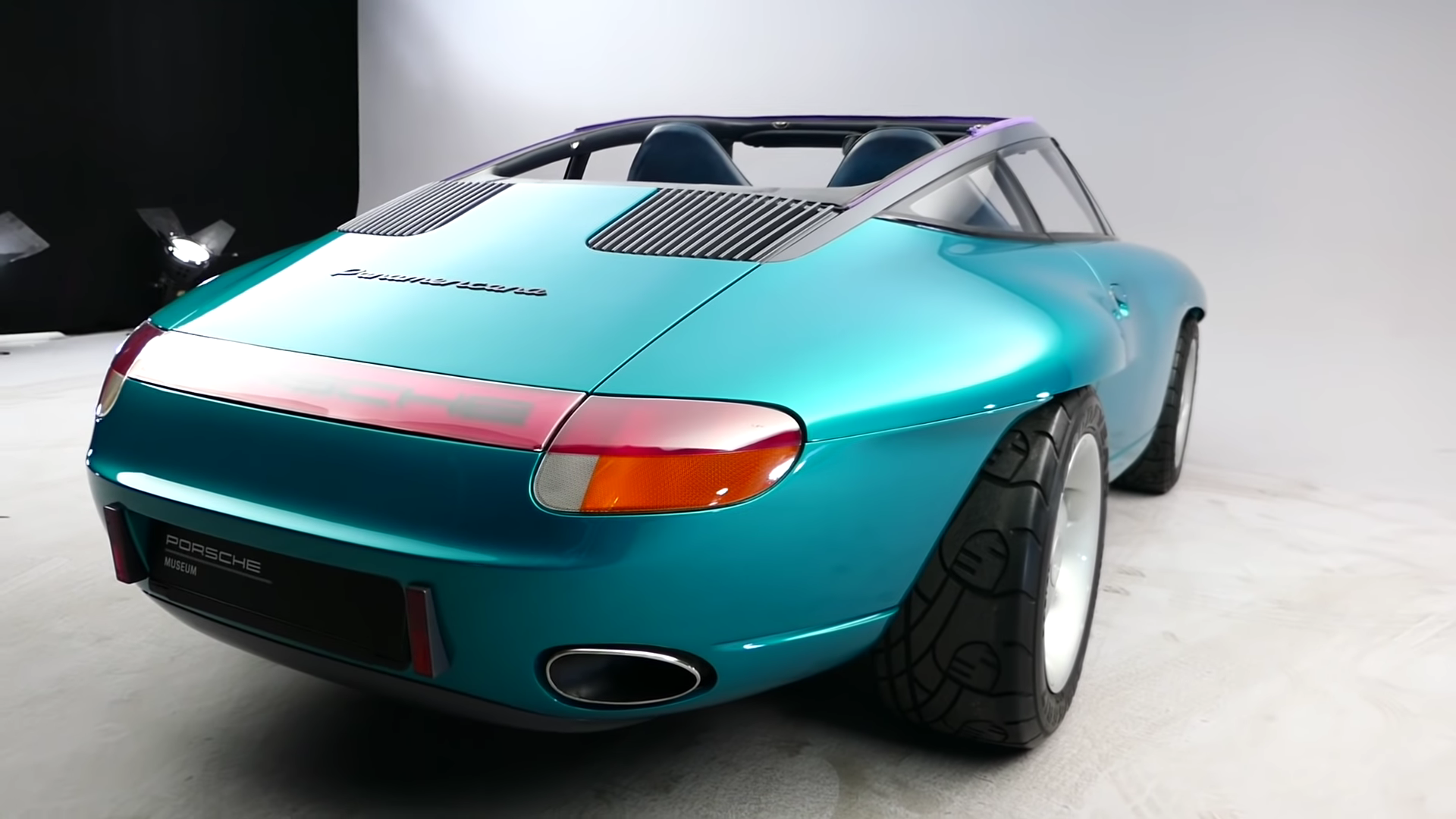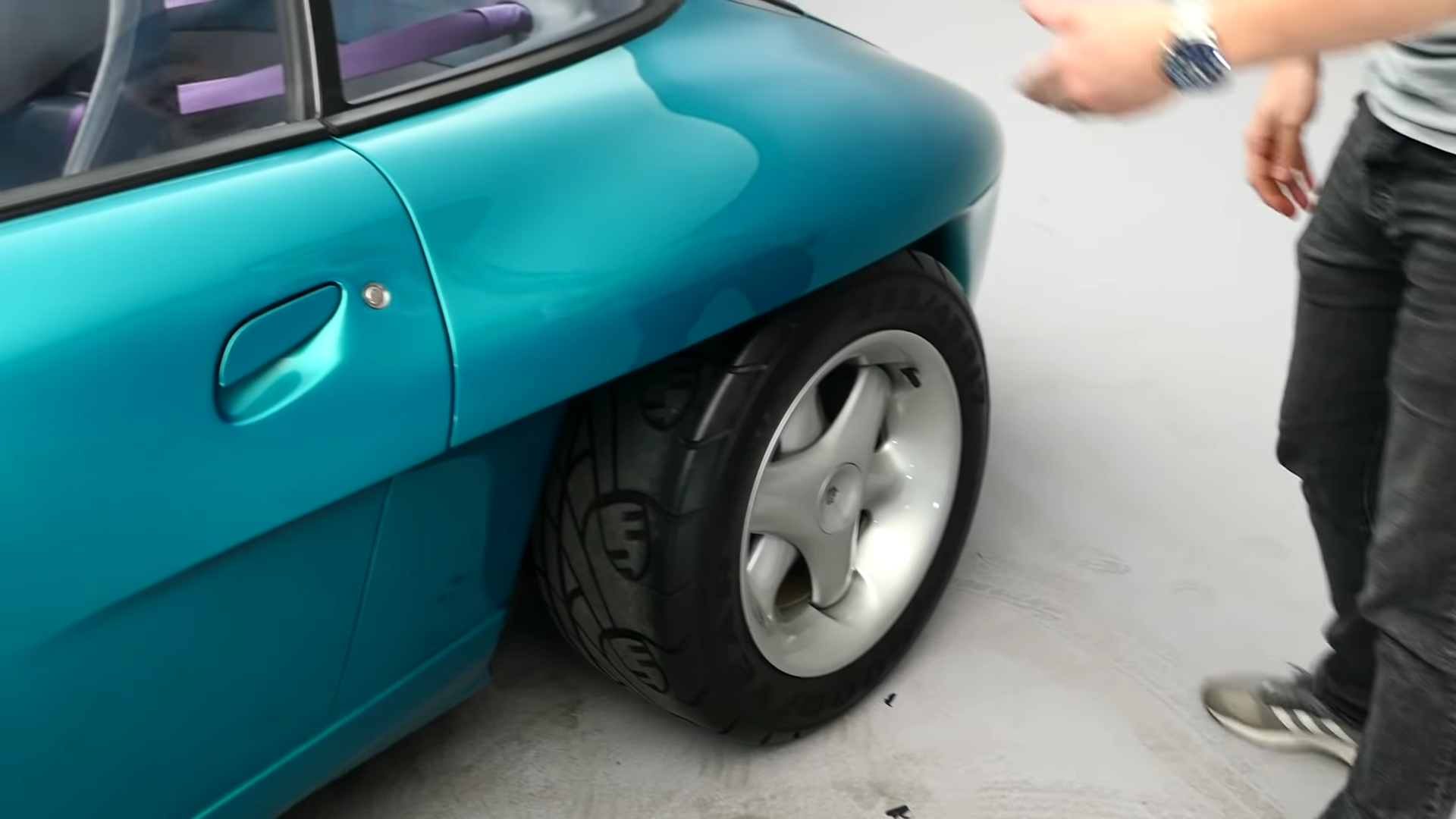
Built for Ferry Porsche’s 80th birthday, the 1989 Panamericana resided stylistically between the more conservative shapes of the eighties and the experimental, often divisive cosmetic touches which made up Porsche’s repertoire at the end of the following decade. Finished in a coat of aquamarine and clearly meant to turn heads, this beautifully sculpted machine could’ve done so much for lending a fun, festive feel to the Porsche lineup, but economics kept this car from ever seeing mass production.
It took its name from the Carrera Panamericana, a dangerous, cross-country race along Mexico’s Pan-American highway which also gave us the model names Carrera and Panamera. Perhaps the romantic images conjured up in dreams of a cross-country trip in an open-top car inspired its free-spirited design.

The 550 Spyder enjoyed success here in ’53 and ’54.
Though the Panamericana wasn’t truly open-top, you could be forgiven for thinking it was. More than a Carrera with a few additional cuts along its hips and roofline, the Panamericana and its jelly beanish shape took the targa’s approach to inviting the elements in and went a bit further. Save for the thin structural band along the perimeter, its all-glass top was transparent. If someone wanted all the country fragrances filling their nostrils, the roof and the rear window could be removed.
Stunning were these bold streaks through the entire side of the body—so clearly a design relished by the concept artist—and yet they were fucntional. They made for the easy addition of wider and/or knobbier tires—drag be damned—if this car was to take an off-road or trackday trip. After all, cars racing along the Ruta Panamericana had to be fast on both the paved and loose surfaces.
It also made strides towards modernizing body construction. Around this time, steel was falling out of fashion in premier sports car construction, so the bright minds in Stuttgart designed a carbon-fiberglass “sandwich” which they fashioned into the Panamericana’s body panels. This brought the weight down to a respectable 3,197 pounds—and that’s with a heavy drivetrain and lots of glass.
The engine was a hastily implanted 3.6-liter from a contemporary Carrera 4 Cabriolet connected to the four-wheel driven system. With 247 horsepower and 230 lb-ft of torque, the Panamericana sprinted to 60 after 6 seconds, 13.6 in the quarter-mile, and a top speed of 160.

If you wanted to risk sounding a little dismissive, the Panamericana could be described as a blend between dune buggy and an artist’s rendering of a stylized 911, but the sum of its many aesthetic touches make it something more. The sharkish snout, strongly tapered windows, and exposed wheels bring leave the draftsmen among us a little giddy. Some of its touches take their inspiration from the 928—most clearly the angled nose, though the central strip connecting the tailights would be seen on the 993 and the final variant of the 928. The little triangle of fried egg underneath the made its way into the Boxster, and those large oval exhaust tips would later be seen cutting through the 996’s bumper. A collection of touches from two different decades blended together seamlessly, if you like.

The artist’s touch could be seen just about everywhere. Even the heavy-sidewalled tires wrapping those fresh and carefree six-spokes had Porsche crests cut into the tread pattern.
Porsche’s economic woes in the late eighties prevented this car from leading the glamorous life it’d been promised; one of a rolling head-turner in affluent suburbs where the standard 911 had become a little common. Moreover, it had a sense of occasion which few cars of this era could hope to match. With the glass top removed and the country air wafting through the cabin, the Panamericana could give owners a taste of what racing was like forty years prior.
Unfortunately, it never spent much time in the sun. Only two examples exist, and they’re both kept in museums.
